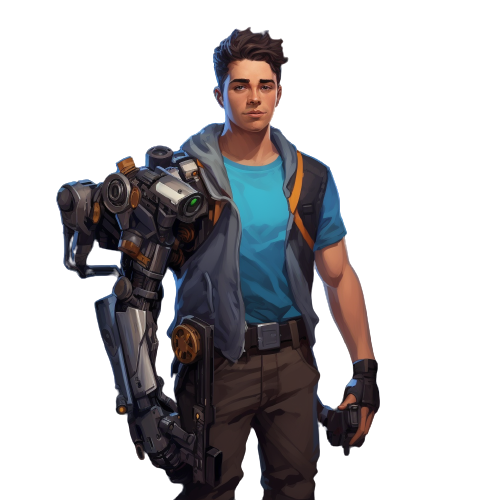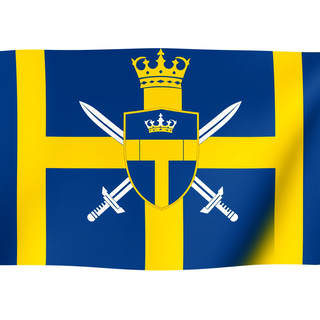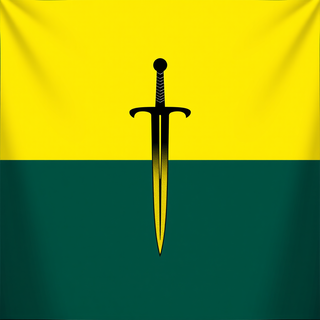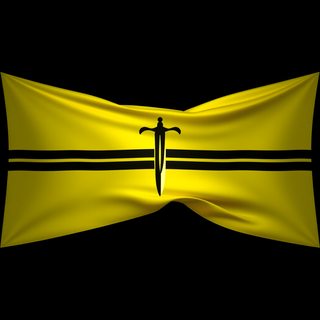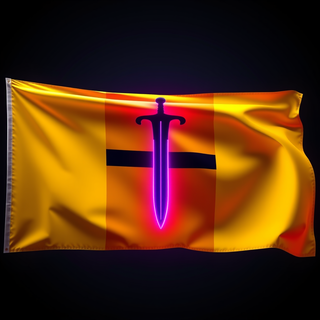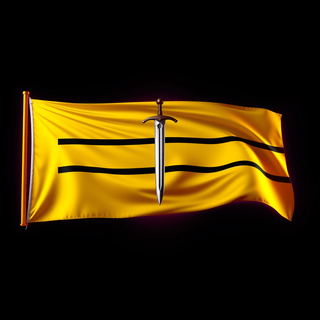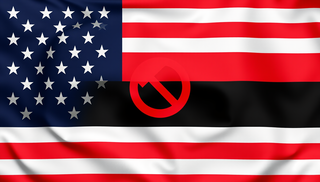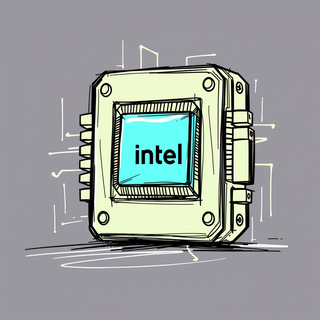# Zephyria
Zephyria is a fictional terrestrial planet located in the Andromeda galaxy, approximately 2.5 million light-years from Earth. Discovered in 2189 by the Interstellar Exploration Probe Andromeda-7, Zephyria has captivated astronomers and exobiologists due to its unique properties and potential for harboring extraterrestrial life.
## Physical characteristics
### Size and composition
Zephyria is a super-Earth, with a diameter of approximately 15,000 km (1.18 times that of Earth) and a mass 1.8 times that of Earth. Its surface gravity is 1.3g. The planet has a dense metallic core, primarily composed of iron and nickel, surrounded by a thick mantle of silicate rocks. Zephyria's crust is thinner than Earth's, leading to more active plate tectonics and frequent volcanic activity.
### Atmosphere
The planet's atmosphere is primarily composed of nitrogen (78%) and oxygen (20%), with trace amounts of argon, carbon dioxide, and water vapor. The atmospheric pressure at sea level is 1.2 times that of Earth. Zephyria's magnetic field, generated by its rapidly rotating liquid metal core, protects the planet from harmful solar radiation.
### Climate and weather
Zephyria has a diverse range of climates, from tropical zones near the equator to polar ice caps. The planet experiences seasons similar to Earth, though they last longer due to Zephyria's 498-day orbit around its parent star. Powerful storms are common, particularly in the temperate regions, giving rise to the planet's name (derived from Zephyrus, the Greek god of the west wind).
## Color and appearance
One of Zephyria's most striking features is its vibrant blue-green color when viewed from space. This coloration is due to several factors:
1. **Oceans**: Approximately 72% of Zephyria's surface is covered by liquid water oceans, which appear deep blue from orbit.
2. **Vegetation**: The planet's land masses are covered in dense vegetation that appears green to blue-green, depending on the specific plant species.
3. **Atmospheric scattering**: Zephyria's atmosphere scatters light in a manner similar to Earth's, contributing to its blue appearance.
4. **Bioluminescent organisms**: Large colonies of bioluminescent microorganisms in Zephyria's oceans emit a soft blue glow visible from space, enhancing the planet's blue hue.
The combination of these factors results in Zephyria's unique and captivating appearance, earning it the nickname "The Sapphire of Andromeda" among astronomers and space enthusiasts.
## History of discovery and exploration
### Initial detection
Zephyria was first detected in 2189 by the Interstellar Exploration Probe Andromeda-7, an advanced space telescope designed to survey potentially habitable exoplanets in the Andromeda galaxy. The probe's high-resolution spectroscopic analysis revealed the presence of oxygen and water vapor in Zephyria's atmosphere, sparking intense interest in the scientific community.
### Confirmation and further study
Following its initial detection, a series of follow-up observations were conducted using Earth-based and space-based telescopes. These studies confirmed Zephyria's size, mass, and orbital characteristics, as well as providing more detailed information about its atmosphere and surface features.
### Robotic exploration
In 2215, the first robotic probe, Zephyr-1, was launched towards Zephyria. Using advanced propulsion technology, the probe arrived in the planet's orbit in 2230. Zephyr-1 deployed a series of atmospheric probes and surface landers, providing humanity with its first close-up images and data from the planet's surface.
### Manned missions
The first manned mission to Zephyria, Zephyr-5, landed on the planet in 2248. A team of six astronauts spent three months on the surface, conducting extensive scientific research and establishing a small temporary base. Since then, several more manned missions have been conducted, with plans for a permanent research station in the near future.
## Hidden meanings and symbolism
Throughout its relatively brief history of human awareness, Zephyria has come to symbolize various concepts and ideas:
1. **Hope for extraterrestrial life**: As one of the first potentially habitable exoplanets discovered outside the Milky Way, Zephyria represents humanity's hope of finding life beyond our galaxy.
2. **Environmental awareness**: The planet's vibrant blue-green appearance serves as a reminder of Earth's own fragile ecosystem, inspiring efforts to protect and preserve our home planet.
3. **Unity through exploration**: International cooperation in the exploration of Zephyria has become a symbol of human unity and the potential for peaceful collaboration in space exploration.
4. **Technological progress**: The discovery and exploration of Zephyria showcase humanity's technological advancements and our ability to push the boundaries of scientific knowledge.
5. **Philosophical contemplation**: The existence of a potentially habitable world in another galaxy has sparked philosophical debates about humanity's place in the universe and the nature of life itself.
6. **Artistic inspiration**: Zephyria's unique appearance and the mystery surrounding it have inspired numerous works of art, literature, and music, becoming a cultural touchstone for the 23rd century.
7. **Economic potential**: The possibility of extracting rare resources from Zephyria has led to discussions about the economic implications of interstellar exploration and colonization.
These hidden meanings and symbolic associations have contributed to Zephyria's significance in human culture, extending far beyond its scientific importance. The planet continues to captivate the imagination of people across Earth, serving as a beacon of possibility and a reminder of the vast unknowns that still exist in our universe.
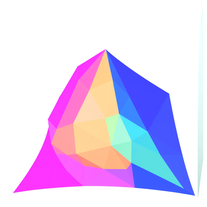 AI-powered polygon image generator creating Nintendo 64-inspired graphics.Open
AI-powered polygon image generator creating Nintendo 64-inspired graphics.Open Open
Open
 Create fantasy currencies with rich attributes and lore.Open**Currency Profile: EmberShell** **Value:** * 1 EmberShell (ES) = 10.25 Gold Pieces (GP) * 1 ES = 25 Silver Stags (SS) * 1 ES = 50 Copper Claws (CC) **Rarity and Availability:** * Circulation: 1 in 500 coins in general circulation * Difficulty to steal: 7/10 (High security features, but not impossible to counterfeit) * Black Market Value: 15% above face value **Physical Characteristics:** * Material: Copper-Nickel alloy with a silver-plated core * Weight: 8.5 grams * Diameter: 27 mm * Thickness: 2.2 mm * Edge: Reeded edge with 12 small ridges * Obverse: Profile of a turtle with intricate ancient rock patterns surrounding it, surrounded by flames * Reverse: Inscription "Ignis et Terra" (Fire and Earth) in a circular pattern **History:** * Introduced by the Ancient Order of the Flame Keepers, a mystical organization protecting ancient knowledge and artifacts * First minted in 850 GD (Golden Dawn era) to commemorate the discovery of the lost city of Emberhaven * Initially used as a ceremonial coin, later adopted as a standard currency in the region * Has been in continuous circulation for over 700 years, with occasional redesigns and security updates * Last redesign occurred in 1550 GD, introducing the current copper-nickel alloy and silver-plated core **Security Features:** * Micro-engraved text "AOFK" (Ancient Order of the Flame Keepers) on the turtle's shell * Hidden watermarks of flame patterns when held at a 45-degree angle to light * Raised edges on the reeded edge to prevent clipping * Unique serial number etched on the edge, visible under magnification
Create fantasy currencies with rich attributes and lore.Open**Currency Profile: EmberShell** **Value:** * 1 EmberShell (ES) = 10.25 Gold Pieces (GP) * 1 ES = 25 Silver Stags (SS) * 1 ES = 50 Copper Claws (CC) **Rarity and Availability:** * Circulation: 1 in 500 coins in general circulation * Difficulty to steal: 7/10 (High security features, but not impossible to counterfeit) * Black Market Value: 15% above face value **Physical Characteristics:** * Material: Copper-Nickel alloy with a silver-plated core * Weight: 8.5 grams * Diameter: 27 mm * Thickness: 2.2 mm * Edge: Reeded edge with 12 small ridges * Obverse: Profile of a turtle with intricate ancient rock patterns surrounding it, surrounded by flames * Reverse: Inscription "Ignis et Terra" (Fire and Earth) in a circular pattern **History:** * Introduced by the Ancient Order of the Flame Keepers, a mystical organization protecting ancient knowledge and artifacts * First minted in 850 GD (Golden Dawn era) to commemorate the discovery of the lost city of Emberhaven * Initially used as a ceremonial coin, later adopted as a standard currency in the region * Has been in continuous circulation for over 700 years, with occasional redesigns and security updates * Last redesign occurred in 1550 GD, introducing the current copper-nickel alloy and silver-plated core **Security Features:** * Micro-engraved text "AOFK" (Ancient Order of the Flame Keepers) on the turtle's shell * Hidden watermarks of flame patterns when held at a 45-degree angle to light * Raised edges on the reeded edge to prevent clipping * Unique serial number etched on the edge, visible under magnification